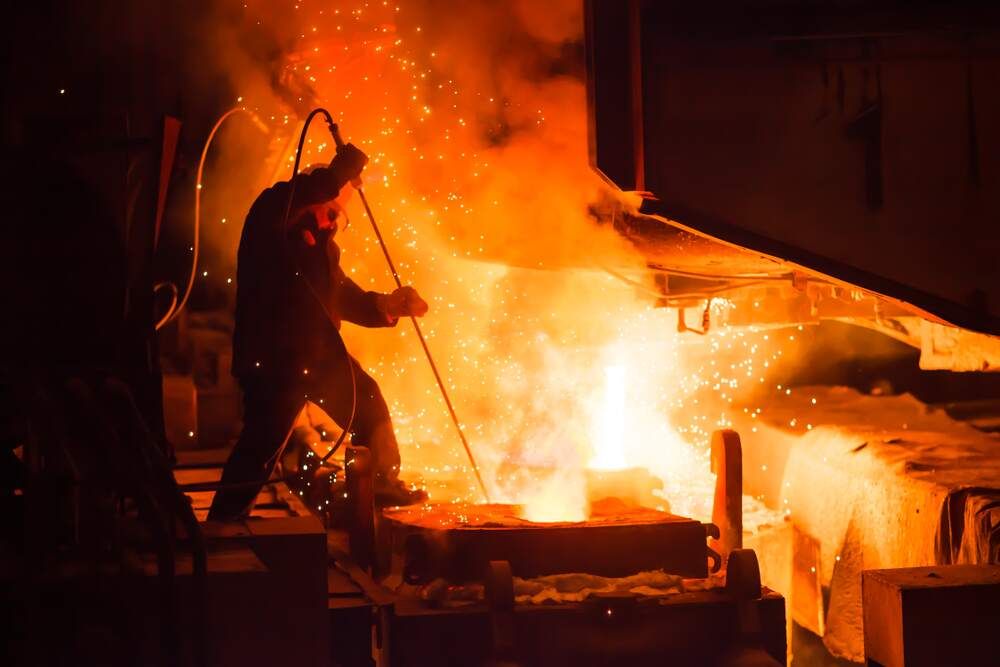Iron, Metal & Steel
PROVIDING INNOVATIVE MEASUREMENT SOLUTIONS
Iron, Metal & Steel Industries
Delivering Safety & Process Monitoring Solutions, You Can Trust
The Iron, Metal & Steel production industries are diverse and regulated industries. It is of central importance for the modern global economy as the need for metal grows. Our analytical technologies and solutions will help you make better process control adjustments, increase product quality, improve reliability, and reduce risks to your plant, personnel, and the environment. Our gas analysis solutions for chemical processing help increase product quality, improve reliability, and reduce risks to your plant, personnel, and the environment.
We know your process and how critical it is for you to protect precious and limited resources.
WE’RE HERE FOR YOU
APPLICATION SUPPORT
Let our Factory Trained and Certified Support Team review your application and requirements. We understand there are times when your process parameters change due to external conditions. This may require adding components to an existing stream or adding a new stream. We offer many high performance, affordable, turnkey solutions for your application. Explore our Application Support.
-

GAS MIXING STATIONS
Gas analyzers are used in steel manufacturing plants to monitor the composition of the fuel gas used in their processes. The fuel gas used in steel manufacturing plants is typically a mixture of various gases, such as natural gas, coke oven gas, and blast furnace gas. The composition of this gas mixture can vary over time, depending on the source and the production process.Our EXTREL™ MAX300-RTG™ 2.0 mass spectrometer can be used in steel manufacturing plants that produce usable fuel gas for their processes to measure the composition and quality of the gas mixture. One application of the MAX300-RTG 2.0 mass spectrometer in steel manufacturing plants is to monitor the quality of the coke oven gas used as a fuel source. Coke oven gas is a byproduct of the coking process used to produce coke from coal, and it is typically used as a fuel source in steel manufacturing plants. However, the composition of coke oven gas can vary widely, depending on the coal source and the coking process.
-

BLAST FURNANCE
Steel blast furnaces require gas analyzers to measure and monitor the composition of the gases produced during the steel-making process. Blast furnaces are used to produce molten iron from iron ore, coke, and limestone. The process involves injecting hot air into the furnace, which reacts with the coke to produce carbon monoxide gas. This gas then reacts with the iron ore, reducing it to molten iron.
The Blast Furnace remains an important part of today’s steel production industry, and our EXTREL™ MAX300-RTG™ 2.0 Industrial Gas Analyzer continues to provide the analytical information today’s process engineers need for optimum process control.
-

BASIC OXYGEN PROCESS (BOP)
Steel manufacturers monitor the Basic Oxygen Process (BOP). Steel manufacturers improve the Basic Oxygen Process (BOP) using our EXTREL™ MAX300-RTG™ 2.0 quadrupole mass spectrometers.
-

VACUUM OXYGEN DECARBURIZATION
The Vacuum Oxygen Decarburization (VOD) process involves the removal of carbon and other impurities from molten steel by exposing it to oxygen and reducing the pressure to create a vacuum.
Vacuum Oxygen Decarburization (VOD) is a manufacturing process that ensures the quality of stainless steel, relies heavily on fast and precise measurements of stream compositions during various stages of the process. The speed and accuracy provided by the EXTREL™ MAX300-RTG™ 2.0 Industrial Process Mass Spectrometer meets the VOD application’s fast analysis requirement. The real-time analysis provided by this analyzer system enables VOD processes to be optimized for efficiency and product quality.
-

PROCESS WATER
In steel manufacturing, process water is monitored for several reasons. Poor water quality can lead to equipment damage, reduced production efficiency, and product quality issues. Monitoring the process water for pollutants such as heavy metals, oils, and chemicals ensures that the discharge meets environmental regulations. Process water can pose a safety hazard to workers if it contains harmful chemicals or pathogens. Monitoring process water usage and quality helps identify opportunities to reduce water consumption and associated costs. ANd, mMonitoring process water flow and temperature can help ensure equipment performance and avoid equipment failure due to overheating.
Our LAR™ water quality analysis solutions are used in steel manufacturing to monitor Chemical Oxygen Demand (COD), Total Organic Carbon (TOC), Total Nitrogen (TN), Total Phosphorus (TP), and pH.
-

WASTEWATER
Monitoring wastewater is very important in steel manufacturing. In fact, monitoring wastewater is an essential part of the steel manufacturing process, as it ensures compliance with environmental regulations and helps to protect the environment. We offer a range of products that are specifically designed for the monitoring of industrial wastewater, including those generated by steel manufacturing.
The QuickTOCultra™ water analyzer measures the total organic carbon (TOC) content of wastewater. In steel manufacturing, TOC measurements can be used to monitor the efficiency of wastewater treatment processes and to ensure compliance with environmental regulations.







